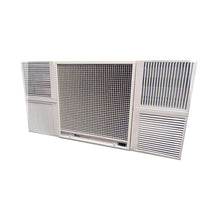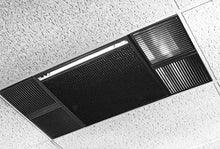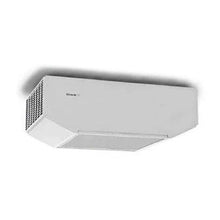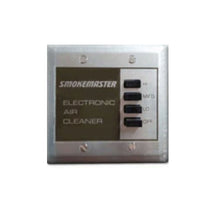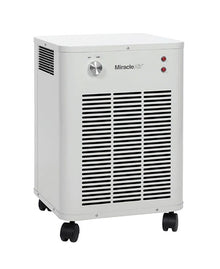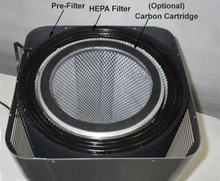Beyond Filters: The Role of Ventilation in Comprehensive Smoke and Odor Management
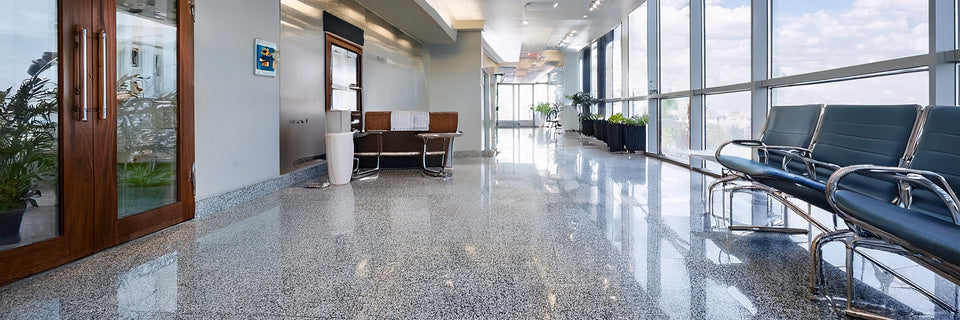
The scent of a restaurant's kitchen or the lingering haze from a wildfire can tell a story, but it’s often a tale of poor indoor air quality. For businesses, from hospitality to industrial settings, smoke and lingering odors aren't just an inconvenience—they're a serious challenge to health, comfort, and compliance. Many assume that a simple air filter is the silver bullet, but at Commercial Air Purifiers, LLC, we know that’s only part of the solution. Truly effective smoke and odor management requires a more holistic strategy that goes beyond basic filtration. It's about understanding the complex interplay between ventilation and air purification, and how they work together to create a safe, clean, and welcoming environment.
The Problem with Smoke and Lingering Odors
Smoke isn't a single substance; it's a complex cocktail of gases and tiny particulate matter. These particles, often much smaller than a single strand of hair, can travel deep into our lungs and even enter the bloodstream. The World Health Organization (WHO) and other health authorities have long warned about the dangers of particulate matter, particularly PM2.5, which is linked to a range of health issues from respiratory problems to cardiovascular disease. The chemical compounds in smoke, such as volatile organic compounds (VOCs), contribute to that distinct, persistent smell and can cause headaches, dizziness, and other symptoms.
While wildfires are a dramatic example of smoke's impact, many businesses face this challenge daily. Restaurants deal with grease and cooking smoke, industrial facilities grapple with fumes, and even apartment buildings can experience smoke migration from one unit to another. The issue is that many buildings are designed for energy efficiency, which means they are tightly sealed. This “sealed-box” approach keeps conditioned air inside but also traps pollutants, creating a buildup of unhealthy air. Simply relying on passive filtration methods in these environments can be like trying to empty a swimming pool with a teacup. Without a strategic approach to air flow, you're constantly fighting a losing battle against the continuous introduction of new pollutants.
The Synergy of Ventilation and Air Purification
Understanding the difference between ventilation and air purification is the first step toward a complete solution. Ventilation is the process of exchanging indoor air with outdoor air. It’s about dilution and pressure control. Think of it as opening a window to let fresh air in and push stale air out. Effective ventilation helps to prevent the buildup of smoke and odors by constantly introducing clean air and removing contaminated air.
Air purification, on the other hand, is about actively cleaning the air that is already inside a building. Air purifiers use a variety of technologies, most notably high-efficiency HEPA filters, to capture and remove airborne pollutants like particulate matter. While ventilation dilutes pollutants, air purification actively eliminates them. At Commercial Air Purifiers, LLC, our focus is on providing robust purification systems that complement a building's ventilation strategy, not replace it. For example, a restaurant kitchen might have a robust exhaust system (ventilation) to remove cooking smoke, but a commercial air purifier in the dining area can capture any smoke or odors that escape, ensuring a comfortable experience for patrons.
Crafting an Integrated Smoke Removal Solution
A truly comprehensive approach involves designing an integrated smoke removal solution that leverages both ventilation and purification. This requires careful consideration of the building's specific needs, including its size, the type of pollutants present, and the existing air flow patterns.
For commercial spaces dealing with smoke, the first step is to assess the commercial building air flow smoke dynamics. This involves understanding where pollutants are generated and how they move throughout the space. An HVAC professional can perform a smoke test to visualize air flow patterns and identify pressure differences. This can reveal areas where smoke might be stagnating or leaking into unintended spaces. This is where the importance of a properly sized ventilation system comes in, ensuring that there is adequate air exchange to prevent the buildup of contaminants.
Once the ventilation strategy is optimized, an air purification system can be introduced to provide a powerful line of defense. The key is to select a unit with a high enough CFM (Cubic Feet per Minute) rating to effectively clean the air in the target area. Our internal team at Commercial Air Purifiers, LLC frequently works with clients to determine the optimal CFM for their specific needs, taking into account factors like ceiling height, room size, and the nature of the pollutants. For spaces with a high volume of smoke or odors, we might recommend multiple units or strategically placing them near the source of the contamination to capture pollutants before they spread. You can easily determine the right size unit for your needs using our CFM calculator.
While many purifiers are available on the market, our experience has shown that not all are created equal. We exclusively offer units made in North America and they’re guaranteed. We've conducted extensive testing to ensure our products meet the highest standards of quality and performance, which is why we’re confident in our selection and stand by the products we offer.
A 2021 study published in the journal Building and Environment highlighted the effectiveness of combining ventilation with high-efficiency filtration to improve indoor air quality. Researchers found that while ventilation was crucial for reducing CO2 levels, the addition of a HEPA filtration system significantly reduced particulate matter concentrations, demonstrating the synergistic effect of the two approaches. This confirms our core belief that true air quality management is a multi-layered process.
Practical Solutions and Recommendations
Creating a clean air environment is not a one-size-fits-all process. The following practical steps can help businesses implement an effective solution:
1. Assess Your Specific Needs:
Before you invest in any equipment, you need to understand the nature of your air quality problem. Is it persistent cooking smoke? Intermittent cigarette odor? Or a consistent flow of industrial fumes? The solution for a restaurant kitchen will be vastly different from what’s needed for a cigar lounge. The source of the pollutant will dictate the type and intensity of both your ventilation and your purification strategy. For example, a facility dealing with strong chemical odors might need specialized carbon filters in addition to HEPA filtration to address the gaseous contaminants.
2. Optimize Existing Ventilation:
Work with an HVAC specialist to ensure your building's existing ventilation system is working correctly. This includes checking air flow, verifying ductwork integrity, and confirming that exhaust fans are properly sized and located. Proper ventilation can significantly reduce the load on your air purifiers, extending filter life and improving overall efficiency.
3. Implement Strategic Air Purification:
Once you’ve confirmed that your ventilation is optimized, you can introduce air purification to polish the air. For example, a commercial kitchen might use a high-CFM unit to capture stray smoke and odors in the dining area, while an office might use a more compact unit to address the occasional burnt popcorn smell. Our purifiers are designed to be integrated seamlessly into a building's existing environment, working quietly in the background to ensure clean air. Because we’ve tested our products, we know they are high-performing and built to last.
A Trusted Partner in Air Quality
At Commercial Air Purifiers, LLC, we believe that the best air is a blend of proper design and powerful technology. It's not about selling a product; it’s about providing a comprehensive solution. By combining robust ventilation with our high-quality, North American-made air purifiers, businesses can confidently tackle the challenges of smoke and odor, creating a space that is not only healthier but also more inviting.
Frequently Asked Questions
What is the difference between an air purifier and a HEPA filter?
A HEPA filter is a type of mechanical air filter; it’s a component inside many air purifiers. A true HEPA filter captures 99.97% of particles that are 0.3 microns in size. Our purifiers use HEPA filters to effectively remove smoke particulate matter.
How often do air purifier filters need to be replaced?
Filter life depends on the specific model, the level of air pollution in the environment, and the frequency of use. In a smoky environment, filters may need to be replaced more often. We provide guidelines for each of our units to help our customers plan for maintenance.
Can an air purifier eliminate all smoke and odors?
While a high-quality air purifier can significantly reduce smoke and odors, it works best as part of an integrated system with proper ventilation. It’s designed to capture the pollutants that linger in the air, but without proper ventilation to dilute the air, the purifier would be overwhelmed.
By: Commercial Air Purifiers, LLC
This article is intended for educational purposes and is based on our experience in the field of commercial air quality. For specific health concerns, consult a medical professional.

